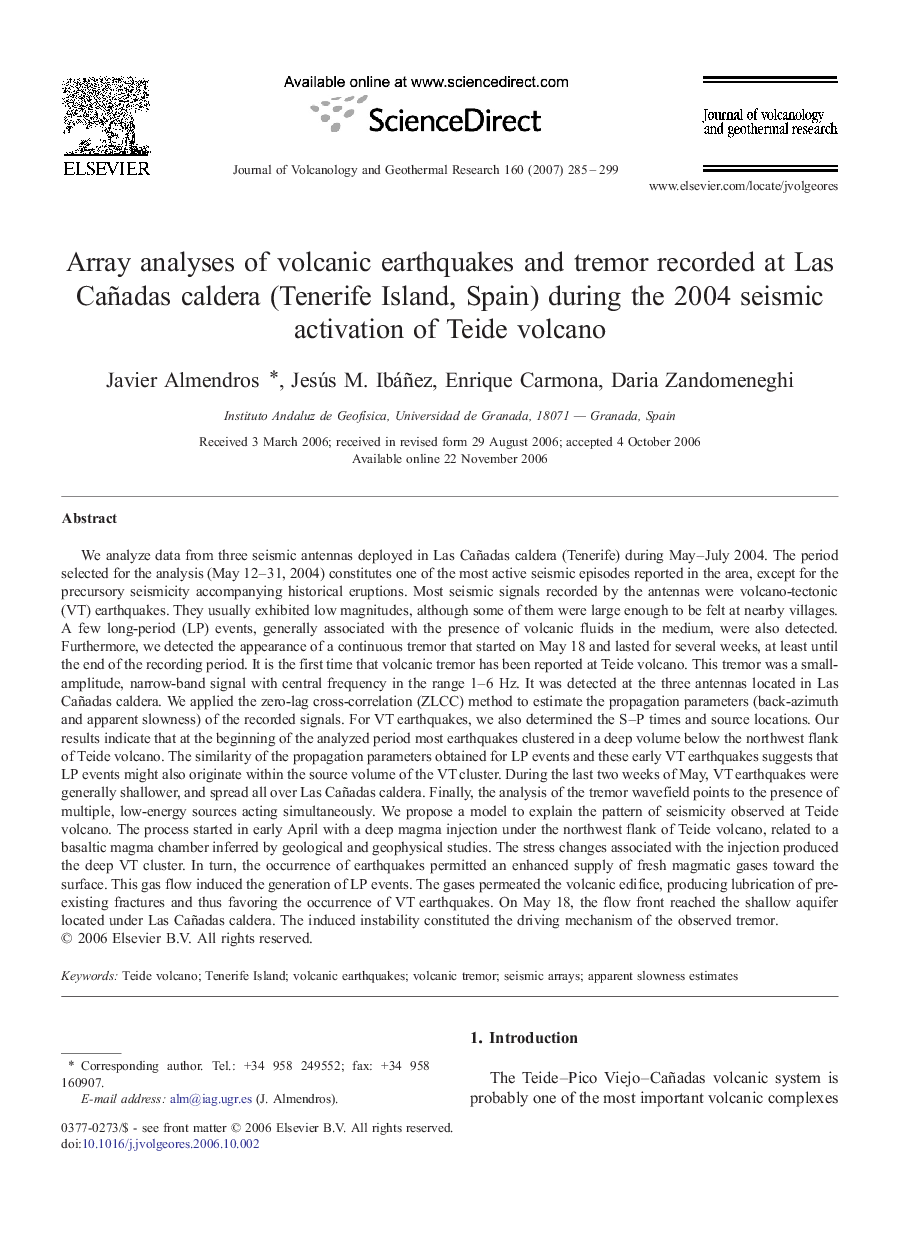| کد مقاله | کد نشریه | سال انتشار | مقاله انگلیسی | نسخه تمام متن |
|---|---|---|---|---|
| 4713907 | 1638467 | 2007 | 15 صفحه PDF | دانلود رایگان |

We analyze data from three seismic antennas deployed in Las Cañadas caldera (Tenerife) during May–July 2004. The period selected for the analysis (May 12–31, 2004) constitutes one of the most active seismic episodes reported in the area, except for the precursory seismicity accompanying historical eruptions. Most seismic signals recorded by the antennas were volcano-tectonic (VT) earthquakes. They usually exhibited low magnitudes, although some of them were large enough to be felt at nearby villages. A few long-period (LP) events, generally associated with the presence of volcanic fluids in the medium, were also detected. Furthermore, we detected the appearance of a continuous tremor that started on May 18 and lasted for several weeks, at least until the end of the recording period. It is the first time that volcanic tremor has been reported at Teide volcano. This tremor was a small-amplitude, narrow-band signal with central frequency in the range 1–6 Hz. It was detected at the three antennas located in Las Cañadas caldera. We applied the zero-lag cross-correlation (ZLCC) method to estimate the propagation parameters (back-azimuth and apparent slowness) of the recorded signals. For VT earthquakes, we also determined the S–P times and source locations. Our results indicate that at the beginning of the analyzed period most earthquakes clustered in a deep volume below the northwest flank of Teide volcano. The similarity of the propagation parameters obtained for LP events and these early VT earthquakes suggests that LP events might also originate within the source volume of the VT cluster. During the last two weeks of May, VT earthquakes were generally shallower, and spread all over Las Cañadas caldera. Finally, the analysis of the tremor wavefield points to the presence of multiple, low-energy sources acting simultaneously. We propose a model to explain the pattern of seismicity observed at Teide volcano. The process started in early April with a deep magma injection under the northwest flank of Teide volcano, related to a basaltic magma chamber inferred by geological and geophysical studies. The stress changes associated with the injection produced the deep VT cluster. In turn, the occurrence of earthquakes permitted an enhanced supply of fresh magmatic gases toward the surface. This gas flow induced the generation of LP events. The gases permeated the volcanic edifice, producing lubrication of pre-existing fractures and thus favoring the occurrence of VT earthquakes. On May 18, the flow front reached the shallow aquifer located under Las Cañadas caldera. The induced instability constituted the driving mechanism of the observed tremor.
Journal: Journal of Volcanology and Geothermal Research - Volume 160, Issues 3–4, 15 February 2007, Pages 285–299